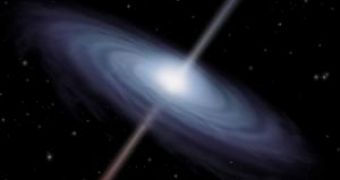In the 1970s Stephen Hawking showed that singularities, and therefore black holes, can exist in our space-time continuum. He also revealed that although black holes radiate mass and energy in the surrounding medium through the event horizon, information falling into a black hole would be lost forever, meaning that matter falling into a black hole and emerging later through the event horizon cannot be identified as being one and the same.
Some theoretical physicists accepted the idea, while others strongly criticized it. And the Information Paradox was born. The debate still continues today, although Stephen Hawking seems to have changed some of his ideas along the way, since quantum mechanics had already shown that information cannot be lost. In the late 1990s he stated that information falling inside a black hole would not be lost, instead it would be passed into a parallel universe through a white hole and it would appear to us as being lost forever.
In 2004, Hawking renounced his idea altogether, even though no physical experiment had demonstrated that information could exit in a black hole. Now, a new idea proposed by Abhay Ashtekar from Penn State University would not only resolve the information paradox but it would also shatter our understanding of the concept of space-time continuum.
According to Einstein's Theory of General Relativity, black holes represent severe distortions in the structure of space-time, which manifests itself through what we call gravity. Once information falls in this distortion, it has little to no chance of ever coming out. Ashtekar however, says that if space-time were to be bigger than previously believed, then that information should have enough room to reappear.
"Information only appears to be lost because we have been looking at a restricted part of the true quantum-mechanical space-time. Once you consider quantum gravity, then space-time becomes much larger and there is room for information to reappear in the distant future on the other side of what was first thought to be the end of space-time", Ashtekar said.
We generally think of space-time as being a continuum. But what if it's not, what if it is made of many other pieces? The concept of space-time continuum was invented only to better understand how gravity seems to be warping objects in its presence. In everyday life we cannot observe the effect, but in the vicinity of black holes space-time is so severely distorted by gravity that light is warped around the singularity.
"Once we realized that the notion of space-time as a continuum is only an approximation of reality, it became clear to us that singularities are merely artifacts of our insistence that space-time should be described as a continuum", Ashtekar said.

 14 DAY TRIAL //
14 DAY TRIAL //